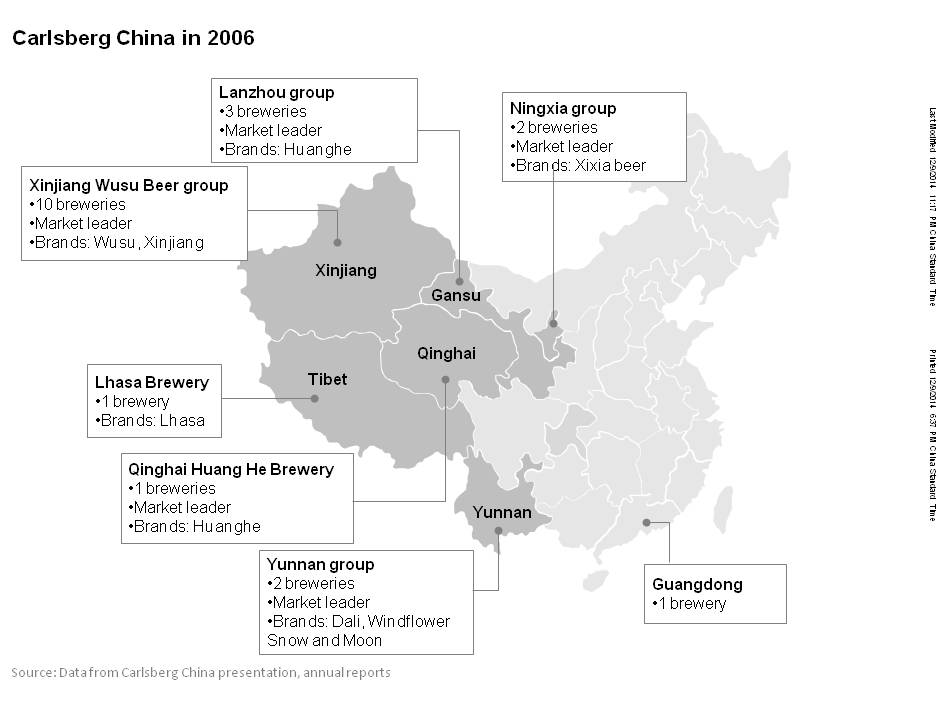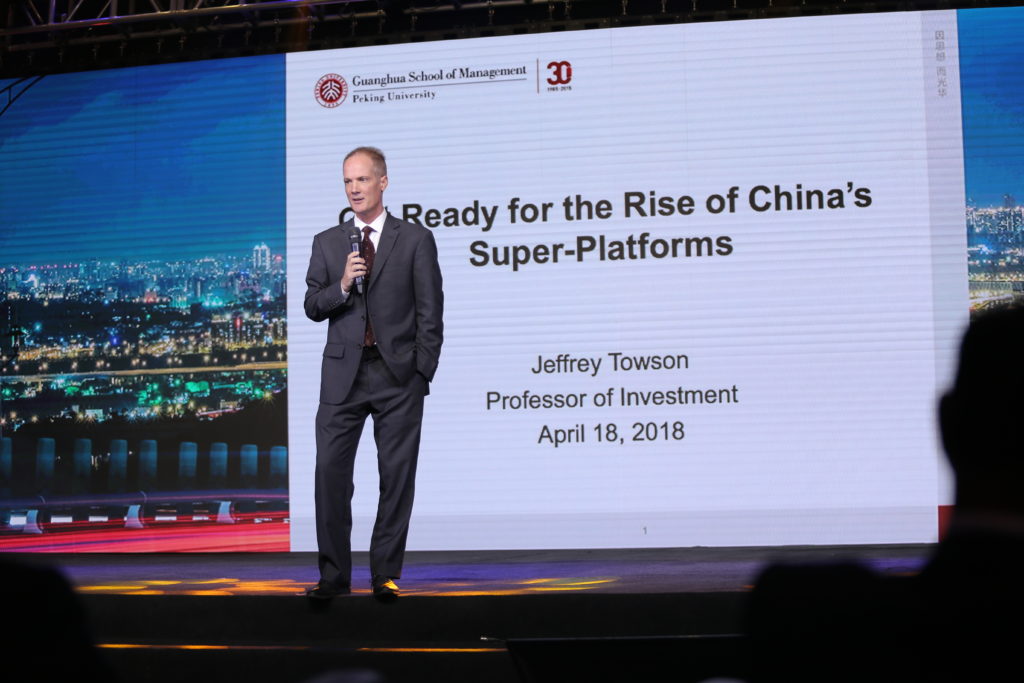*The following is an excerpt from our One Hour China Consumer Book (which is available here.). Part 1 of this story is here.
Sunny and Carlsberg Leave China
Sunny Wong joined Carlsberg China as a sales manager in 1987, six years after Carlsberg had opened its first China brewery (in Hong Kong ). Carlsberg’s first big move on the Mainland came in 1995 when it acquired a brewery in Huizhou, Guangdong. They shifted all production from Hong Kong to this facility. They also purchased part of a brewery in Shanghai during this period.
But Carlsberg, like virtually every other foreign beer maker, struggled in China. Despite the attractive demographics, beer prices in China were low. And foreign companies found themselves at a disadvantage in terms of growth, both organic and by acquisition. The three giant brewers that emerged during this period, Yanjing, Tsingtao and China Resources, were all State-owned. And right behind them were Zhujiang and Kingstar, also State-owned.
Over time, regional markets had become increasingly dominated by certain beer companies. Tsingtao beer was strongest in East China. China Resources and Harbin were strong in the Northeast. And Yanjing beer was strong in the North. The market also developed a significant oversupply of production capacity – some argue as high as 40%. This, unsurprisingly, led to price wars and thus even smaller profit margins.
This came to a head in 1999 when Carlsberg appears to have decided to exit China. We don’t know exactly what was going on internally. But by 1999, Carlsberg’s competitors were starting to look much larger than them. In 2000, Carlsberg sold 75% of its Shanghai brewery to Tsingtao, with the remainder to be sold later. They also exited a 50/50 joint venture they had formed with the Thai company Chang Beverages Pte., Ltd. And in 1999, Sunny exited Carlsberg after 12 years and moved to the UK (where he enrolled in an MBA program).
Sunny and Carlsberg Pioneer an Ambitious Go-West Strategy
What happened between 1999 and 2002 with Carlsberg is unclear to us as outsiders. What we do know is that beginning in 2002, Carlsberg began making a series of bold and surprising moves in China. And this is where this story gets really cool.
Because they didn’t partner with an SOE like SABMiller. Nor was there a merger like AB-InBev. And they didn’t go premium like Heineken. Instead, they chose to leave the major China markets and go West, deep into Inland China. They exited Shanghai and Beijing and headed to Xinjiang and Yunnan. And in 2002, Sunny came back to Carlsberg and accepted what he has referred to as a “mission impossible task” – to go to West China and develop Carlsberg’s business. He has joked that this was his first time to actually go to those places.
It was a daring strategy. Inland China was the one region that was not yet dominated by the large SOE brewers. It was still open territory. But you also need to have a picture in your mind of Western China circa 2003. It was the poorest part of China. It was a massive and undeveloped territory. There was little infrastructure and even less money. It was not the end of the earth, but you could probably see it from there.
The Tibet market (Photo by Matt Ming (creative commons license, link here))
A review of Sunny’s Carlsberg presentation in 2006 is fascinating. Western China had exceptionally low per-capita beer consumption. In Eastern China in 2005, it ranged from 30-80 liters per person, but in Tibet and Ningxia it was only 10-15 liters. And in Yunnan and Xinjiang it was closer to 3 liters. That could of course mean big growth one day. More likely, it meant small money in difficult geographies for the foreseeable future.
Carlsberg’s “Go West” strategy hinged on acquisitions basically a race for local scale. And they went on an impressive deal spree starting in 2003. Sunny was first sent to Yunnan. There Carlsberg acquired 100% of Kunming Huashi Brewery and Dali Beer Group. This was followed by the acquisition of the majority (first 33%, later increased to 50%) of Lhasa Brewery in Tibet. Then a majority share (30% later increased to 50%) in Lanzhou Huanghe’s three breweries in the Gansu Province. Then an investment in a Greenfield brewery in Qinghai with production starting in 2005 – and the acquisition of 34.5% of Wusu Brewery in Xinjiang Autonomous Region. In 2005, they increased their share in Wusu Brewery Group to 50%. And in 2006, through a joint venture with Ningxia Nongken Enterprise Group, they established a Greenfield brewery in Ningxia Autonomous Region. Carlsberg had 70% of that joint venture.
By 2006, Carlsberg had 20 breweries that covered half of the geography of China. And they were the market leader in all the Western provinces in which they had invested.
Carlsberg’s Go West strategy hinged on four factors:
First, they entered through JVs with local breweries. These breweries were the remnants of the discussed State-owned system, built over 40 years. Such SOE partnerships neutralize to some degree the disadvantages private companies (foreign and local) have when competing with SOE brewers.
Second, they built out local distribution in a vast and difficult part of China. The majority of sales were through wholesalers, which means locking up the best wholesalers and delivering beer to lots of little stores across a massive geography. To get the best wholesalers you have to have significant market share. And vice versa.
 Third, their products covered the whole customer range. Carlsberg’s beer was priced to discount, mainstream, premium and super-premium. And this today includes Carlsberg Green Label, Carlsberg Chill, Carlsberg Light, Tuborg, and Kronenbourg 1664. These brands should work together to offer trade-up opportunities.
Third, their products covered the whole customer range. Carlsberg’s beer was priced to discount, mainstream, premium and super-premium. And this today includes Carlsberg Green Label, Carlsberg Chill, Carlsberg Light, Tuborg, and Kronenbourg 1664. These brands should work together to offer trade-up opportunities.
Fourth, they drove volume growth in Western China with improved sales and marketing projects. This included re-launching brands in Xinjiang, Yunnan and Ningxia.
Across the board, it was a strategy of regional dominance. They were building a competitive advantage based on local economies of scale in marketing, distribution and production. And they were racing to become a giant in the West.
Sunny was appointed CEO of Carlsberg China in 2006. In 2012, he became Chairman for Greater China. By 2013, he had taken Carlsberg China from one brewery in Huizhou to 39 breweries across seven provinces with over 11,000 China employees.
In 2010, Carlsberg became the largest shareholder in Chongqing Brewery, which has 16 breweries in Chongqing, Sichuan, Hunan, Anhui and Zhejiang. Carlsberg’s goal was to expand the Shancheng brand, a leading brand in these markets. For most companies, going to Chongqing would be considered a big move West. For Carlsberg, it was actually a move East.
Today, according to Carlsberg, they have over 50 China breweries and over 60% market share in Western China, where beer consumption has been growing at 12% annually (versus 4-5% nationally). Carlsberg is also currently building its second largest brewery in the world. This $782M facility will have a production capacity of 10M hectoliters a year. And it will be located in Yunnan, China.”
Thanks for reading, Jeff
*The above is an excerpt from our One Hour China Consumer Book (which is available here.). Part 1 of this story is here.
—–
I write and speak Chinese consumers and digital China.
Photo by Wil Stewart on Unsplash


